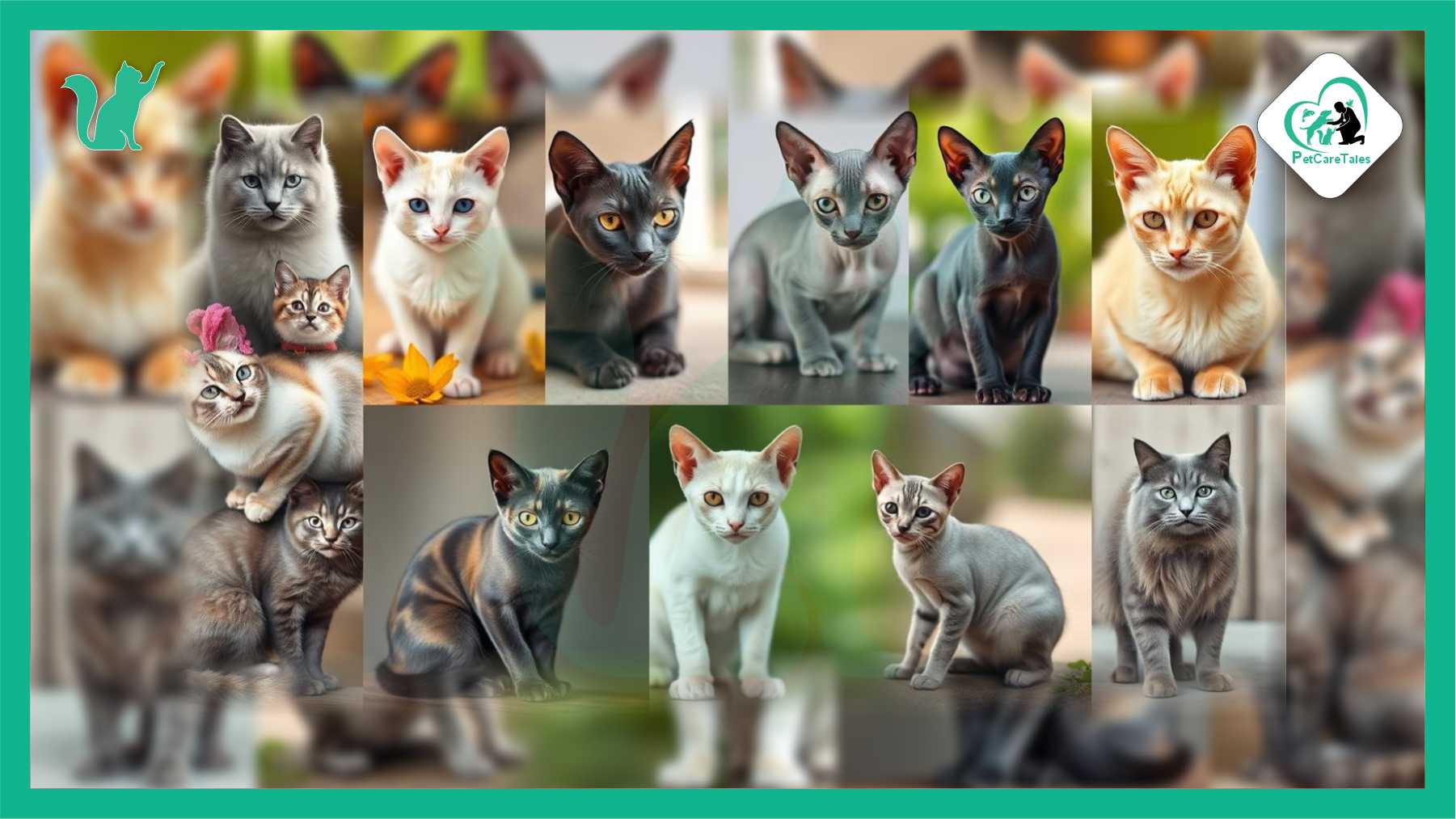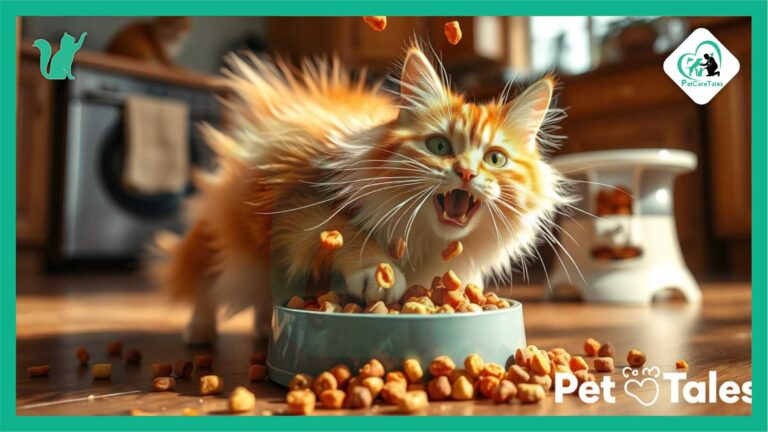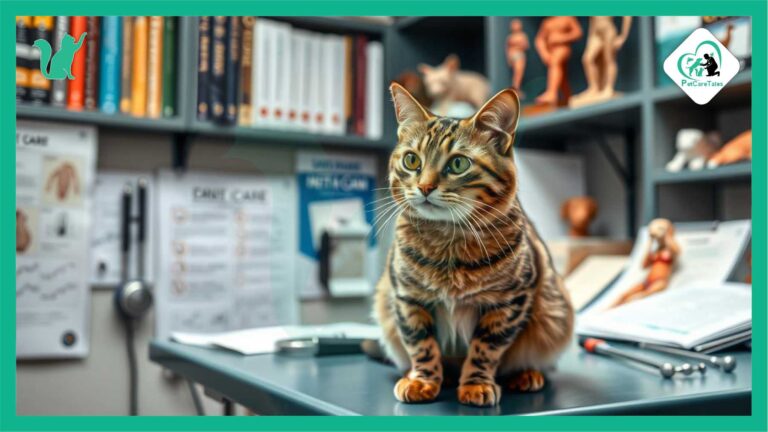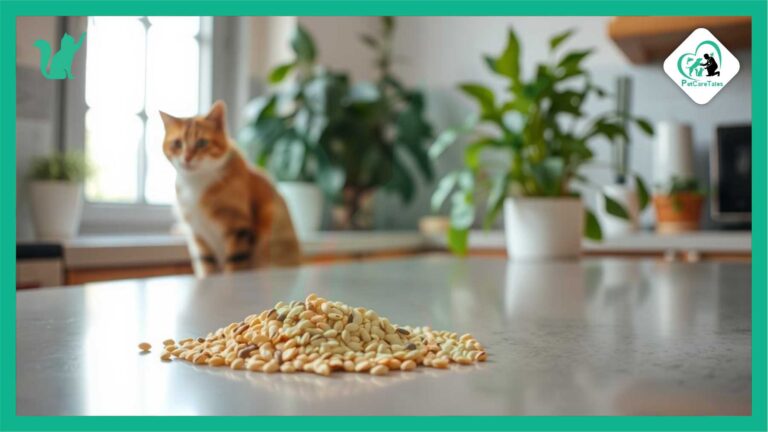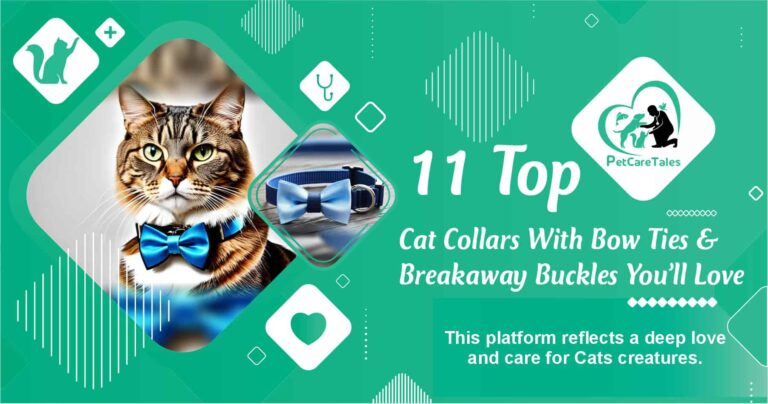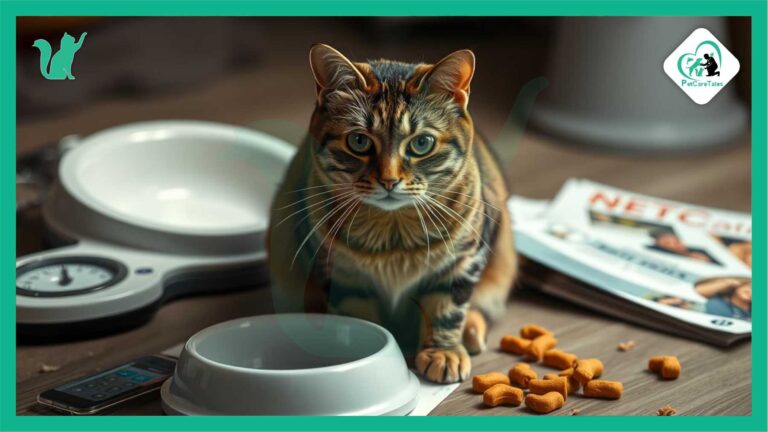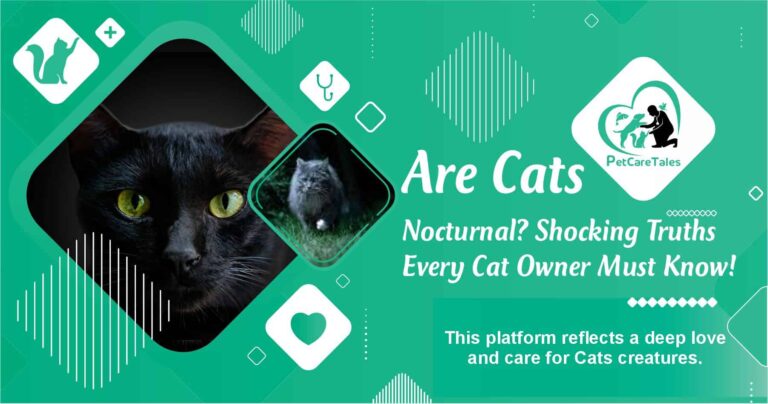10 russian cat breeds an overview (with pictures)
Ever heard of “10 Russian cat breeds an overview”? Russia is home to some of the world’s most unique and rare cats. These breeds have striking looks and fascinating personalities, offering a special bond for cat lovers.
This article explores the 10 Russian cat breeds. We highlight their distinctive attributes and if they make good pets.
You’ll learn about each breed’s history and characteristics. From the fluffy Siberian to the elegant Russian Blue. You’ll see what makes each breed special, whether you want a cuddle buddy or a playmate.
We’ll also share pictures of these breeds. They show the beauty of top Russian cat breeds.
Key Takeaways
- Russia boasts a diverse array of cat breeds, many of which are rare.
- Each of the 10 Russian cat breeds has unique physical characteristics and temperaments.
- Understanding these breeds can help you choose the perfect feline companion for your lifestyle.
- The Siberian cat, one of the oldest breeds, is gaining popularity worldwide.
- The Russian Blue is known for its striking grey coat and affectionate demeanor.
Introduction to Russian Cat Breeds
Russian cat breeds are famous for their unique looks and personalities. They are a favorite among cat lovers. The Russian Blue and Siberian are two popular ones. The rare Donskoy cat is also a hit among enthusiasts.
Every breed has its own special traits. Knowing these can help you find the perfect cat for you. Whether you like the smart Russian Blue or the fun Siberian, there’s a breed for everyone.
The Allure of Russian Cats
Russian cat breeds are known for their elegance and charm. They have beautiful looks and loving personalities. The charm of Russian cats comes from their loyalty and smarts, making them great friends.
Each Russian cat breed has special traits that make them stand out. For instance, Russian Blues have soft fur and bright green eyes. They usually weigh 7 to 12 pounds. On the other hand, the Peterbald breed lives up to 12 to 15 years, showing their long life span.
Learning about Russian cat breeds makes you appreciate their unique qualities. This knowledge shows why they are loved by many worldwide. Their beauty, loyalty, and playful nature make them a joy for cat lovers.
10 Russian Cat Breeds
Start your journey into the world of top Russian cat breeds here. Each breed has its own characteristics of Russian cat breeds. These traits fit different lifestyles and preferences. Knowing these traits helps you choose the right cat for you.
Overview of This List
Here are ten amazing Russian cat breeds. Each has a unique history and trait:
- Russian Blue
- Siberian
- Donskoy
- Kurilian Bobtail
- Nevskaya Maskaradnaya
- Peterbald
- Ural Rex
- Mekong Bobtail
- Fleecy Cloud
- Ussuri
Importance of Understanding Each Breed
Knowing the characteristics of Russian cat breeds helps you pick the right one. For example, the Russian Blue is gentle. It’s great for first-time owners.
The Kurilian Bobtail loves adventure. It’s perfect for active homes. Understanding each breed ensures a happy friendship.
Kurilian Bobtail
The Kurilian Bobtail is a special cat with cool looks and a fun personality. They are great pets for many people. Knowing what makes them unique is fun.
Physical Characteristics and Size
Kurilian Bobtails have a cool, short tail. They are strong and can grow up to 18 inches tall. Their tail is short, 2 to 5 inches long.
Male cats weigh 11 to 15 pounds. Female cats weigh 8 to 11 pounds. Their fur is short to long and comes in many colors like brown and gray.
Personality and Temperament
Kurilian Bobtails are very friendly and loving. They are great with families and people. They are smart and fun to play with.
They like to talk and show their playful side. They need some exercise but love to play and be around people.
Habitat and Availability
Kurilian Bobtails come from the Kuril Islands and sometimes Japan. In the US, they are rare. You can find them in catteries or sometimes in the wild.
They live a long time, up to 20 years. They are very popular, with prices up to $3,000.
Donskoy
The Donskoy cat is special because of its unique looks and fun personality. It comes from Rostov-on-Don, Russia. A hairless cat named Varvara started it all in 1987.
The World Cat Federation recognized the Donskoy in 1987. The International Cat Association followed in 2005. This made the Donskoy very popular fast.
Unique Features of the Donskoy
The Donskoy cat is known for being hairless. It has smooth skin with cool wrinkles. They are 13 to 15 inches long and weigh 6 to 15 pounds.
They come in four types: Rubber Bald, Flock Coat, Velour Coat, and Brush Coat. But, their hairlessness can cause health problems like feline ectodermal dysplasia.
Care Needs for Donskoy Owners
Keeping a Donskoy cat happy means knowing what they need. They get cold easily and can burn in the sun. So, they need a warm, safe place.
Donskoy cats love to play and be with people. They need lots of attention and fun activities. They are very loving and make great friends.
Mekong Bobtail
The Mekong Bobtail is a playful cat breed with a unique history. It comes from Siamese cats. The first standard was suggested in December 1994.
These cats are 7 to 9 inches tall and weigh 8 to 10 pounds. They have short, glossy coats that are great for warm places. They love to play and be around people.
They are smart and full of energy. They love to be with their humans. This makes them great pets for families and singles.
| Characteristic | Description |
|---|---|
| Height | 7 to 9 inches |
| Weight | 8 to 10 pounds |
| Coat | Short, glossy with minimal undercoat |
| Temperament | Playful and sociable |
| Origin | Thailand, descendants of Siamese cats |
| Recognition | Recognized as an experimental breed |
Getting a Mekong Bobtail is like adding a spark to your life. They bring history and charm into your home. They are known for their playful and loving nature.
Siberian Cat
The Siberian cat is a majestic breed loved for its stunning looks and charming personality. They have special traits for cold climates. Their fur is thick, made of three layers, to keep them warm in very cold weather.
Adaptations to Cold Climate
Siberian cats are tough in harsh weather. They have strong bodies, bushy tails, and a coat that keeps water out. They come from Russia and became popular worldwide in the 1990s.
Affectionate and Playful Nature
These cats are not only beautiful but also very friendly and playful. They love people and play games, making them great for families. They are smart and can learn tricks, showing they are fun and clever.
Russian Blue
The Russian Blue is a special cat breed. It has a beautiful blue-gray coat and green eyes. These cats have a rich history tied to Russian culture.
The Rich History of Russian Blues
The Russian Blue’s history is deep and traditional. They were loved by royal families for their elegance. After World War II, American breeders mixed them with Scandinavian and British cats. This created the Russian Blue we know today.
Russian Blues are strong and weigh 7 to 12 pounds. They live for 15 to 20 years. This makes them great friends for a long time. They are rare in North America, but many people want them.
Russian Blues are not super cuddly but they love their family. They are smart and like to play. They like routine and are quiet around strangers. They don’t shed much, which is good for people with allergies.
The Russian Blue is special because of its looks and history. They make great pets, being both playful and regal. Many cat lovers find them irresistible.
Peterbald
The Peterbald cat is a unique breed with a rich history. It was created in St. Petersburg, Russia, in the 1990s. It came from mixing the Don Sphynx with the Oriental Shorthair.
This mix quickly became popular. It was recognized by many cat groups. In 2009, it was officially a Championship breed.
Development of the Breed
The Peterbald cat has grown a lot since it started. It was first recognized in 1996 by the Russian Selectional Feline Federation. Then, it was accepted by The International Cat Association in 1997 and the World Cat Federation in 2003.
It has kept its special traits from its parents. It looks like a mix of Oriental and Siamese cats. Peterbalds live 10 to 15 years, weigh 6 to 14 pounds, and can be up to 17 inches long.
Interaction Needs of Peterbalds
Peterbald cats are not just pretty; they have big personalities. They are very energetic and loving. They love to be around people and enjoy doing things together.
They get along well with new places and people. They need lots of attention to be happy. This makes them great friends.
Karelian Bobtail
The Karelian Bobtail is a rare Russian cat breed. It has a unique look and a warm heart. It was recognized in 1994, showing its special qualities.
This cat is small, with a height of 8 to 12 inches and a weight of 10 to 15 pounds. It looks compact and strong.
Its short, fluffy tail is like a pom-pom. This makes it look playful. The cat is smart, curious, and easy to train.
It gets along well with kids and other pets. This makes it great for families.
Karelian Bobtails love to be close to people. They are affectionate and enjoy giving love. They like to have some alone time too.
They need to play a lot because they are energetic. They do well in homes where they can play and be with people. The cost of this rare cat is between $700 to $3,000.
| Attribute | Details |
|---|---|
| Origin | Russia |
| Height | 8 to 12 inches |
| Average Weight | 10 to 15 pounds |
| Lifespan | 14 to 20 years |
| Price Range | $700 to $3,000 |
| Intelligence | High |
| Playfulness | High |
| Temperament | Affectionate, friendly, energetic |
| Grooming Needs | Moderate |
| Sociability | High |
Toybob
The Toybob cat is special because of its small size and fun personality. It was first seen in Russia in 1983. People love it for being playful and loving.
Characteristics and Size
A Toybob cat is small, about 4 to 6 inches tall and weighs 4 to 7 pounds. They are known for being playful and agile. This makes them happy in their homes.
They have some special features that make them stand out. Here are some of them:
| Feature | Points |
|---|---|
| Head Shape | 9 |
| Eye Quality | 10 |
| Ears | 3 |
| Muzzle/Nose/Chin | 5 |
| Profile | 5 |
| Neck | 3 |
| Torso | 10 |
| Legs/Feet | 6 |
| Tail | 6 |
| Boning | 6 |
| Musculature | 7 |
| Coat Length | 6 |
| Coat Texture | 10 |
| Coat Color/Pattern | 4 |
| Balance | 5 |
| Condition | 5 |
The Toybob cat is not just small but also great as a family pet. They love being around people and playing with kids and other pets. They can live over fifteen years, making them loyal friends for a long time.
Neva Masquerade
The Neva Masquerade is a special cat from Russia. It has beautiful colors and loves people. Knowing the difference between Neva Masquerade and Siberian cats makes them even more special.
Differences Between Neva Masquerade and Siberian Cats
Neva Masquerade cats are a special color version of Siberian cats. They are bigger, with males up to 20 pounds. Females are smaller, weighing 4.5 to 9 kg.
- Fur Length and Texture: Neva Masquerades have long, fluffy fur. They need regular grooming. Siberians have similar fur but might need less grooming.
- Color Variations: Neva Masquerades have colors like seal, blue, and tortoiseshell. Siberians have more colors but no colorpoint markings.
- Social Behavior: Neva Masquerades love people and bond strongly. Siberians are friendly but more independent.
Neva Masquerade cats are beautiful and lively. They are special pets. Knowing their differences helps cat lovers choose the right one.
| Characteristics | Neva Masquerade | Siberian Cat |
|---|---|---|
| Average Weight | 10-20 lb (4.5-9 kg) | 8-17 lb (3.6-7.7 kg) |
| Coat Type | Semi-long to long | Long |
| Color Patterns | Colorpoint variations | Various solid and tabby colors |
| Social Behavior | Highly social, forms strong bonds | Friendly but more independent |
| Age of Maturity | ~5 years | ~3-5 years |
Ussuri
The Ussuri cat is a special breed. It has unique looks and a fun personality. Knowing how they act can make your life with them better.
Social Behavior of Ussuri Cats
Ussuri cats like to be alone but also very loyal. They need to get to know you well. Here’s what you need to know:
- Reserved Nature: They seem shy at first.
- Strong Attachments: They love one person very much.
- Playful Interactions: They love to play and be close to you.
- Socialization Needs: They need to meet people and things to be friendly.
Having an Ussuri cat is special. They show love when they feel safe. Being patient and understanding is key to a great bond.
Conclusion
Exploring the 10 Russian cat breeds shows us many special traits. Each one, like the Russian Blue and the Siberian, has its own charm. They can make your home happier and more peaceful.
When picking a Russian cat breed, think about their unique personalities and needs. This helps you make a happy home for them. Choosing the right breed means you’ll have a great friend for many years.
Choosing a Russian cat breed is about making a strong bond. Enjoy the journey and give your cat the love and care they need. They will bring joy and comfort to your life for a long time.
FAQ
What are the most popular Russian cat breeds?
The Russian Blue, Siberian, and Donskoy are top picks. Each has its own special traits.
Are there any rare Russian cat breeds?
Yes, the Ussuri and Karelian Bobtail are rare. They’re not as common and can be tough to find.
What are the distinctive traits of the Siberian cat?
Siberian cats are sturdy and have thick, water-repellent fur. They love people and do well in cold weather.
How do I care for a Donskoy cat?
Donskoy cats need special care because they have little fur. Keep them warm, clean their skin, and play with them a lot.
What makes the Russian Blue unique?
Russian Blues have beautiful blue-gray fur and green eyes. They’re quiet but loving, making great friends.
Can Mekong Bobtails adapt to family life?
Yes, Mekong Bobtails are fun and social. They fit well in families and with kids.
What are the main characteristics of the Peterbald cat?
Peterbalds are sleek, with fur that can be short or long. They love to play and need lots of attention.
How do I differentiate between a Neva Masquerade and a Siberian cat?
Neva Masquerades are a colorpoint version of Siberians. They’re bigger, have longer fur, and are very talkative and friendly.
Do Ussuri cats make good pets?
Ussuri cats can be loving but are more independent. With the right care, they can form strong bonds with their owners.
How does the Kurilian Bobtail differ from other breeds?
The Kurilian Bobtail stands out with its short tail and strong body. It looks and acts differently from other cats.
*Recommended articles:*
*Copyright ©. petcaretales.com. All Rights Reserved.*
Thanks For Reading!!

